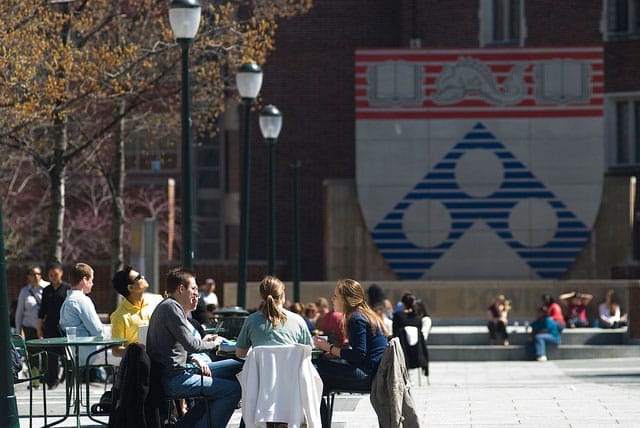I worked at my first startup at age 16 and have since been a marketing and operations analyst for two manufacturing startups out of Los Angeles and Philadelphia. I’ll be honest though. I haven’t been your typical Wharton kid; I’ve spent more time in dance studios than in class and have worked more in Illustrator and Photoshop than in Excel or Bloomberg. Yet, Wharton has helped me channel my creativity and problem-solving skills into entrepreneurial drive and instinct. This drive, mixed with my love of socializing, brought me to Down to Chill, a social networking app that I’ve co-founded.
As an entrepreneur, I have found the following four skillsets to be invaluable for my problem-solving and creative process:
1. Finding needs: Wearing your “need finding goggles” means seeing how each step in a process generates both a cost and a benefit. The first step in any successful entrepreneur’s path is finding inefficiency and understanding the constraints to solving it. With Down to Chill, my co-founders and I found a need for a less random way to manage free time, a social tool that allows for spontaneity and optimization.
2. Playing to your strengths: Once you’ve found a need, throw on your “reading glasses.” How are you going to solve this need? Has someone tried and failed? The key for any good entrepreneur is doing your research on the available resources, which ones are given and which ones you’ll have to acquire. Resources are more than just capital. Resources can be time, knowledge and networks. Knowing what you don’t know can be more powerful than what you know. You don’t need to be exceedingly technical to build the next Google, but you need to know what resources you need to leverage and at what scale to offer your solution to market.
When we founded Down to Chill, we leveraged both our technical skills (coding, presentation skills and design backgrounds) and each of our personal networks. Entrepreneurship means understanding this symbiosis between what you can do in-house and how you can leverage your investment, network, product and brand resources.
Watch Michael and company leverage their acting and video production resources in this promo for Down to Chill.
3. Taking Risks: Swap the reading glasses for some shades and a motorcycle. If you’ve identified a need and a solution, the next step is learning how to take risks. This means appreciating the degree of risk of an action and the worst case/best case of all choices. Slow and steady usually wins the race, meaning that sometimes sitting on an opportunity and trusting it will come up again, when your company is ready to sustain the potential growth, is a risk you must consider as well. Patience can be your best friend if you’re looking to become relevant in your industry versus maintaining relevance.
Our biggest risk so far at Down to Chill has been taking a year leave of absence from school to focus on our product and business. The reality is that no institution is exempt from traditional cost-benefit analysis (whether you’re weighing the opportunity cost of staying at your current job or doing the same for a year’s worth of schooling). For us, the money saved combined with having a unique, formative life experience was much more beneficial than finishing school at age 22 versus 23.
4. Always be learning: You might need to eventually take off your sunglasses once your sun sets. Sometimes you need to adapt, improvise and overcome. Once you’ve successfully brought your solution to market, you should see your solution not as a given but as a recurring historical event and as a product that affects itself. How will your product offering become obsolete? How do you defend against obsolescence and continue innovating? Is it even possible or worth the fight? Learning means never staying satisfied and always remaining hungry. In terms of best practices, begin thinking early on about the metrics and data you will be using to evaluate your successes and failures.
Learning is also one of the easiest ways to make more future resources available in-house. At Down to Chill, for instance, my co-founders Arjun Raj Jain and Adam Elkassas learned a new engine called Famo.us for mobile graphics, adding immense value to our product for a lot less money than contracting out the work.
Editor’s note: Plan to return to Wharton Magazine to read more from Michael, who will continue to blog about the experiences and insights of a student entrepreneur.

























